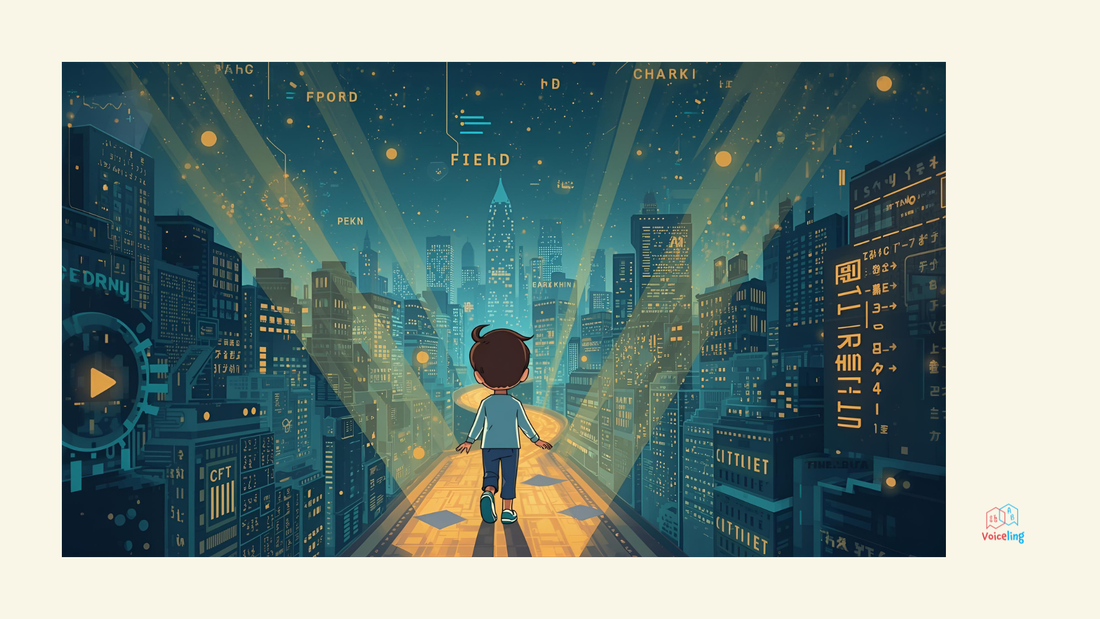
The Human Edge: Why Bilingualism Matters More in the Age of AI
Share
AI can write essays, translate languages, and even mimic empathy. The rules of work are changing faster than we can predict.
But as machines learn to sound human, one question becomes more important than ever: what does it mean to stay human?
They’ll probably reinvent their entire careers multiple times
Artificial intelligence can process information faster than any of us. It can learn patterns, analyse data, and even hold conversations that feel real.
So why are we still here?
For AI to work well, they need context. They need someone with the ability to read the room, adapt the tone, and connect deeply. Those are human skills.
According to the World Economic Forum’s Future of Jobs Report (2023), they’re the very skills that will matter most in the next decade.
Our children will grow up in a world where job titles shift like sand.
In 21 lessons for the 21st century (great book!), Yuval Harari notes:They’re not just likely to change jobs, they’ll probably reinvent their entire careers multiple times.
In that kind of world, it’s not technical skills that keep you afloat. It’s adaptability, empathy, and cultural fluency.
And bilingual children start training those skills from day one.
The Adaptability
Switching between two languages isn’t just a party trick. It’s a daily workout for the brain’s 'control centre', the prefrontal cortex, which handles focus, flexibility, and problem-solving.
Each time a bilingual child decides which word to use and which one to hold back, they’re practising executive function — the same skill that helps them navigate new environments, solve complex problems, and adapt when plans change.
Research has shown bilingual children often perform better on attention and memory tasks. But beyond those lab test scores, the real gift is mental agility.
They learn to see the world through multiple lenses, to understand that one thing can have more than one meaning, and to shift perspectives with ease.
That’s adaptability.
The Connection
Bilingualism also builds something machines can only micmic, empathy.
When children learn to switch languages, they don’t just change words; they change tone, expression, and sometimes even posture. They learn that how you speak to Grandma isn’t how you speak to your teacher. That kind of subtle awareness, of people, relationships, and emotions, is at the core of emotional intelligence.
And emotional intelligence is what drives leadership, teamwork, and creativity.
It’s what helps a person listen before speaking, negotiate instead of argue, and build bridges instead of walls.
Belonging in a Global World
In a world where teams stretch across time zones and cultures, the ability to communicate across boundaries is more valuable than ever.
Studies have shown that multilingual professionals tend to excel in international business, diplomacy, and creative industries because they understand nuance.
Not just language, but culture.
Whether your child grows up in Belfast or Hong Kong, being bilingual means they can belong anywhere. They can connect across difference. They can see beyond translation.
And that’s something no algorithm can do.
Start Small, Start Human
You don’t need lesson plans or apps to build these skills. You just need conversation.
Every time you speak your language at home, you’re helping your child develop adaptability, empathy, and a flexible mind.
You’re teaching them that understanding matters more than perfection. That connection matters more than correctness.
So speak the words that already belong to you. Bring your culture, your voice, your roots into the room. That’s how your child learns to carry them into the future.
Final Thought
AI can write. But it can't feel.
AI can translate. But it can’t understand.
It can predict what comes next in a sentence, but not what someone means between the lines.
Your child’s ability to connect, adapt, and empathise, those are the traits that make them irreplaceable.
Bilingualism is another building block you have to give them that edge.
So, what will it be?
